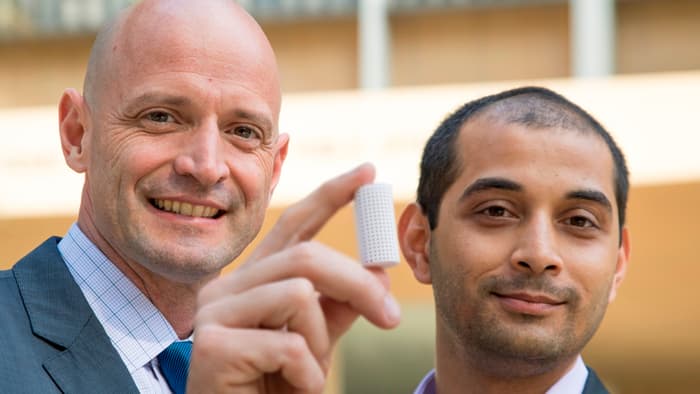
The conversion of carbon into concrete would be a double whammy since concrete production itself is very planet-unfriendly and accounts for 5 percent of all carbon emissions. But an even larger source of CO2 emissions is flue gas, the combustion exhaust gas from power plants, the scientists' main target.
The carbon would be captured and become the raw material for what they call Co2ncrete, using 3D printers in its fabrication. The researchers describe the multi-stage, complex process, which they are still developing, as upcycling.
They started with the idea that capturing CO2 emitted during the calcination of limestone is a feasible method to produce sustainable concrete. Then they set out to investigate how Ca(OH)2 (calcium hydroxide) carbonation would react when exposed to both liquid and supercritical CO2 (the point where distinct liquid and gas phases do not exist). They tested several parameters, including time, temperature and pressure.
For their experiments, the researchers used carbon dioxide with a purity of more than 99 percet. The carbon was extracted from a pressurized reservoir maintained at 20 MPa (megapascal) using a siphon, which was employed in all of the carbonation experiments.
At this stage the material has been produced at lab scale and 3D printed into tiny cones. "We have proof of concept that we can do this," UCLA's J.R. DeShazo says. "But we need to begin the process of increasing the volume of material and then think about how to pilot it commercially."
The researchers would like to see its technology being used by coal-fired power plants in the US as well plants in China and India, which are also global leaders in emissions. They want to create a closed-loop process that prevents carbon from going into the atmosphere while at the same add a great amount of commercial value to the clean-up operation.
"We can demonstrate a process where we take lime and combine it with carbon dioxide to produce a cement-like material," Gaurav Sant, science collaborator to the project, adds. "The big challenge we foresee with this is we're not just trying to develop a building material. We're trying to develop a process solution, an integrated technology which goes right from CO2 to a finished product."
Once they further develop the technology, the researchers will be faced with the equally massive challenge of convincing industry leaders that the technology is good for the planet as well as their bottom line.
"This technology could change the economic incentives associated with these power plants in their operations and turn the smokestack flue gas into a resource countries can use, to build up their cities, extend their road systems," says DeShazo.

 Previous page
Previous page Back to top
Back to top







